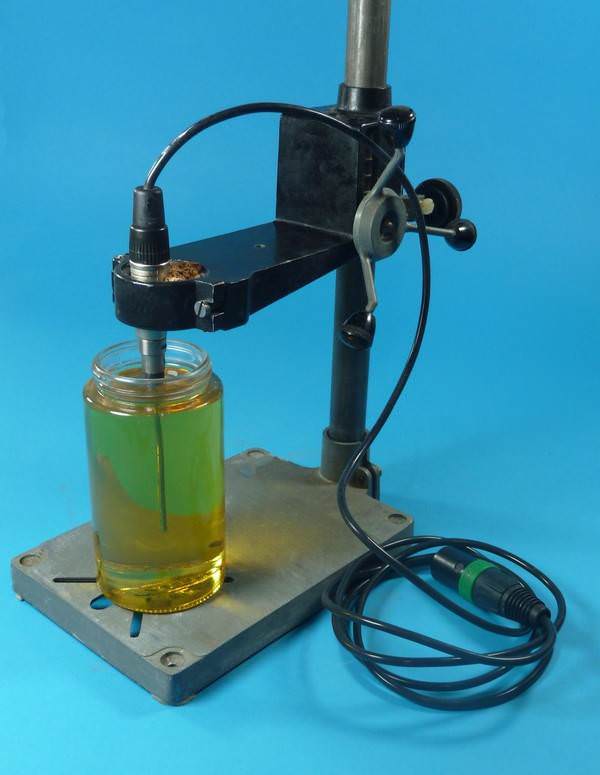Application examples
Testing powder and fragments |
Powder and fragments are tested with the Standard HLQ probe using the TK04 sample container (click image to enlarge). |
Application range

Salt core sample measured with Needle probe (Standard VLQ)

Sand sample measured with Needle probe (Standard VLQ)

Highly viscous oil measured with Needle probe (Standard VLQ)

Close-up of needle probes (Standard-VLQ) in sediment core samples

Plastic samples with Needle probe (Standard VLQ) and probe for plane surfaces (Standard HLQ)

Probe for plane surfaces (Standard HLQ) in a sample container

Rock sample measured with Probe for plane surfaces (Standard HLQ)

Cement block measured with Probe for plane surfaces (Standard HLQ)

Lever press with small sample for plane surfaces (Mini HLQ) on a plastic sample with

Sandstone measured with small sample for plane surfaces (Mini HLQ)
-

Salt core sample measured with Needle probe (Standard VLQ)
To position the needle probe along the axis of the core sample, a drilling has been placed in the salt block and contact fluid has been applied to the probe before inserting it -

Sand sample measured with Needle probe (Standard VLQ)
The sand sample was made with a given degree of compaction. To determine the thermal conductivity of the completely dried material, four guiding tubes were inserted at the desired measuring positions before drying the sample -

Highly viscous oil measured with Needle probe (Standard VLQ)
For determining the thermal conductivity of the highly viscous oil the Standard VLQ probe is fixed in the middle of the sample container with the needle immersed completely up to the handle -

Close-up of needle probes (Standard-VLQ) in sediment core samples
The needle probes are pushed into the samples up to the handle through holes drilled into the plastic liner. The cores were placed in water until completely saturated. The water level has been lowered for the test. -

Plastic samples with Needle probe (Standard VLQ) and probe for plane surfaces (Standard HLQ)
If sample dimensions allow it, most materials can be tested with the needle probe (Standard VLQ) or the probe for plane surfaces (Standard HLQ) or even both -

Probe for plane surfaces (Standard HLQ) in a sample container
For a 2-phase test, a sample container is used whose inner diameter exactly matches the size of the Standard HLQ probe -

Rock sample measured with Probe for plane surfaces (Standard HLQ)
Probes for plane surfaces (Standard HLQ) can be used for rock samples of any shape, if there is a plane and smooth part of the surface approx. 90 mm in diameter -

Cement block measured with Probe for plane surfaces (Standard HLQ)
Probes for plane surfaces (Standard HLQ) can be used to determine the thermal conductivity of cement or concrete samples with plane and smooth sides. The needle embedded into the underside of the probe has been placed diagonally on the top side of the sample cube to maximize the distance to the edges -

Lever press with small sample for plane surfaces (Mini HLQ) on a plastic sample with
The lever press improves the contact between probes for plane surfaces (Standard HLQ, Mini HLQ) and samples. The pressure limiter avoids accidentally damaging the probe by exceeding the allowed maximum pressure -

Sandstone measured with small sample for plane surfaces (Mini HLQ)
The Mini HLQ probe was used because the piece of sandstone available for measuring thermal conductivity was too small for the standard size HLQ
